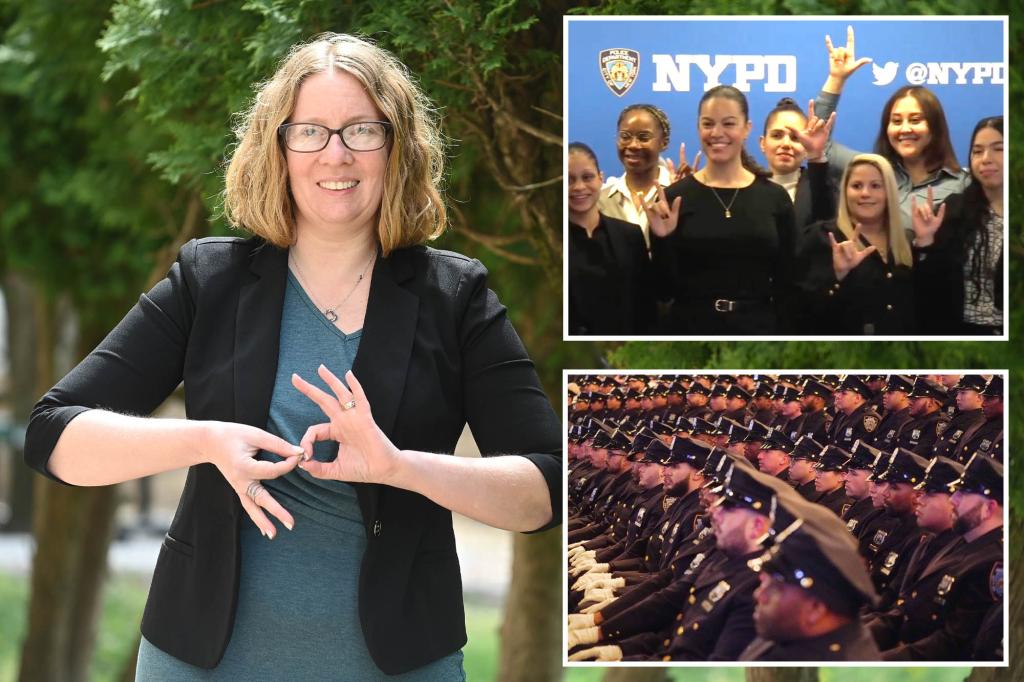The newest class of NYPD recruits, consisting of 600 individuals, received training in basic American Sign Language (ASL) to enhance their ability to communicate with deaf individuals during emergencies. Jessica Wohlstetter, an ASL instructor at various educational institutions, developed and led this training program. The Mayor’s Office for People with Disabilities reports that there are more than 175,000 deaf or hard of hearing individuals in New York City, making ASL an important language to learn for emergency responders.
The training program was initiated in late 2022 by former NYPD Commissioner Keechant Sewell and Wendy Garcia, the department’s deputy commissioner for equity and inclusion, in response to requests from the deaf community for better communication with law enforcement. The cadets were taught essential phrases in ASL such as “Police Officer,” “Ambulance,” “Help,” and “Interpreter.” Additionally, 15 NYPD officers who are children of deaf adults participated in an intensive 8-week course to become certified ASL interpreters, allowing them to assist in investigations and teach sign language to their colleagues.
Once certified, the officers will be able to provide communication assistance to deaf individuals in various situations, from taking statements to teaching sign language. The addition of ASL training was positively received by Katherine Bouton, the president of the NYC chapter of the Hearing Loss Association of America, who suggested that addressing the needs of individuals with less visible hearing loss could also be beneficial. Awareness of potential communication challenges faced by individuals with hearing loss can aid officers in effectively interacting with them during police encounters.
The NYPD officers undergoing ASL training have already begun applying their new skills in live-action simulations at the Police Academy. Wohlstetter voiced optimism that this groundbreaking initiative will serve as a model for other police departments across the country. By incorporating sign language instruction into their curriculum, law enforcement agencies can better serve deaf and hard of hearing individuals they encounter in the line of duty, enhancing inclusivity and communication within their communities.
Wohlstetter aimed to tailor the ASL instruction to real-life scenarios that cadets may encounter during their law enforcement career, emphasizing the importance of effective communication in situations involving domestic violence or children. As deaf children often have limited interactions with signing adults outside of school, a uniformed officer equipped with ASL skills can provide a sense of comfort and support to these children in times of crisis. By inspiring children in the deaf community through their interactions, officers can play a crucial role in building trust and fostering inclusivity within the community.
Overall, the implementation of ASL training within the NYPD represents a significant step towards improving communication and understanding between law enforcement officers and individuals with hearing impairments. By equipping officers with the ability to communicate effectively in ASL, the NYPD aims to provide better service and support to the deaf and hard of hearing community in various emergency situations. This innovative program has the potential to set a new standard for police departments nationwide and create a more inclusive and supportive environment for individuals with hearing loss.


